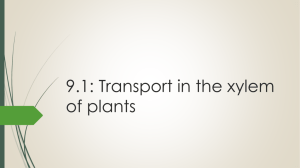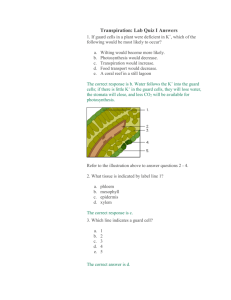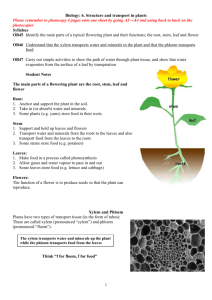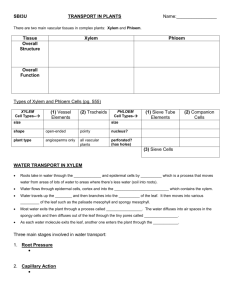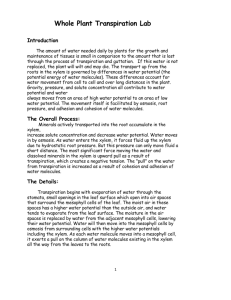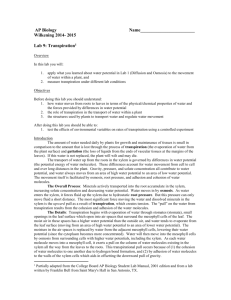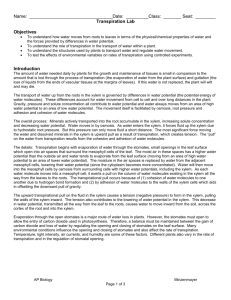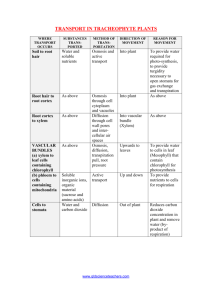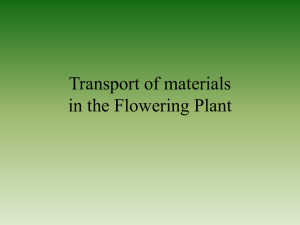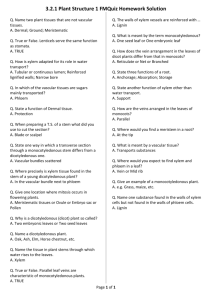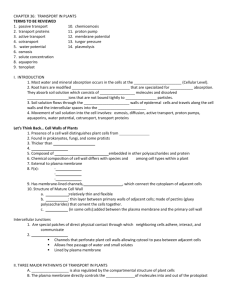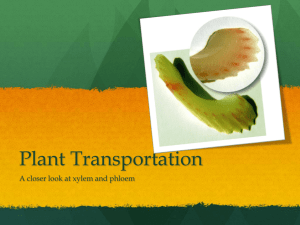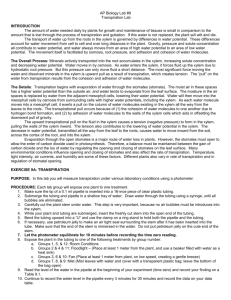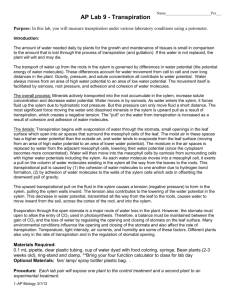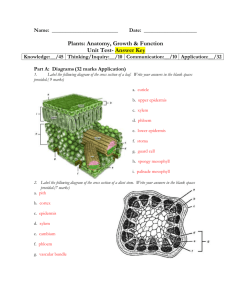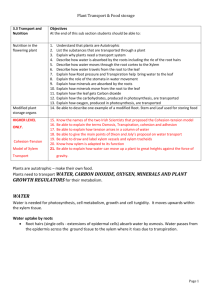B5.1 Revision notes
advertisement
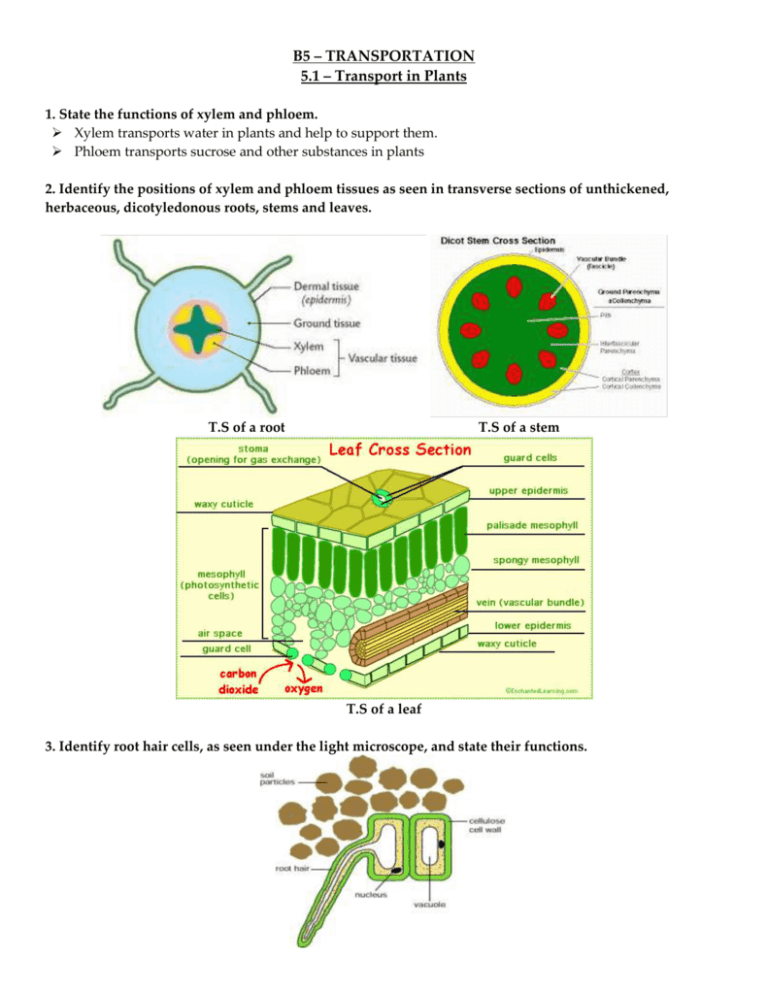
B5 – TRANSPORTATION 5.1 – Transport in Plants 1. State the functions of xylem and phloem. Xylem transports water in plants and help to support them. Phloem transports sucrose and other substances in plants 2. Identify the positions of xylem and phloem tissues as seen in transverse sections of unthickened, herbaceous, dicotyledonous roots, stems and leaves. T.S of a root T.S of a stem T.S of a leaf 3. Identify root hair cells, as seen under the light microscope, and state their functions. Functions: Increases the surface area of the root for absorption of water and mineral ions. Provides anchorage for the plant. 4. Relate the structure and functions of root hairs to their surface area and to water and ion uptake. Each root hair is a long epidermal cell, this increases the surface area for absorption; Root hairs are long & thin and so can penetrate between the smallest soil particles for absorption. 5. State the pathway taken by water through root, stem and leaf. Root hair Root cortex cells xylem of root xylem of stem cells xylem of leaf mesophyll cells 6. Investigate, using a suitable stain, the pathway of water through the above-ground parts of a plant. IGCSE Biology (Jones & Jones), p. 105, activity 8.2 ‘to see which part of a stem transports water & solutes’. 7. Define transpiration - evaporation of water at the surfaces of the mesophyll cells followed by loss of water vapour from plant leaves, through the stomata. 8. Describe how water vapour loss is related to cell surfaces, air spaces and stomata. Transpiration is the loss of water vapour from the leaf; Water in the mesophyll cells form a thin layer on their surfaces; The water evaporates into the air spaces in the spongy mesophyll; This creates a high concentration of water molecules in the air spaces. Water vapour diffuses out of the leaf into the surrounding air, through the stomata, by diffusion. 9. Describe the effects of variation of temperature, humidity and light intensity on transpiration rate. The table below shows the factors that can result in an increase in the rate of transpiration. (If these factors are reversed, the rate will decrease). FACTOR Increase in temperature Increase in air movement e.g. wind Decrease in humidity Increase in light intensity EXPLANATION Increases the kinetic energy of the water molecules, so they diffuse faster Removes water molecules as they pass out of the leaf, maintaining a steep concentration gradient for diffusion Results in lower concentration of water molecules outside the leaf, making a steeper concentration gradient for diffusion Stomata open to allow gas exchange for photosynthesis , so water vapour can diffuse out of the leaf 10. Explain the mechanism of water uptake and movement in terms of transpiration producing a tension (“pull”) from above, creating a water potential gradient in the xylem, drawing cohesive water molecules up the plant. Mechanism of water uptake a. Water enters root hair cells by osmosis (as the water potential in the soil surrounding the root is higher than in the cell); b. As the water enters the cell, its water potential becomes higher than in the cell next to it, e.g. in the cortex; c. So the water moves by osmosis, into the next cell; d. This process is repeated until water reaches the xylem. Mechanism of water movement through a plant a. Transpiration continuously removes water from the leaf; b. Thus water is constantly being taken from the top of the xylem vessels, to supply the cells in the leaves; c. This reduces the effective pressure at the top of the xylem vessels; d. This creates a transpiration stream or ‘pull’, pulling water up; e. Water molecules have a strong tendency to stick together. This is called cohesion; f. When the water is ‘pulled’ up the xylem vessels, the whole column of water stays together; g. Roots also produce a root pressure, forcing water up the xylem vessels. 11. Define translocation - movement of sucrose and amino acids in phloem, from regions of production or of storage to regions of use for respiration or growth.

